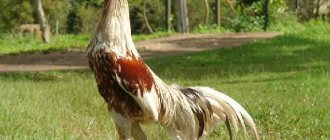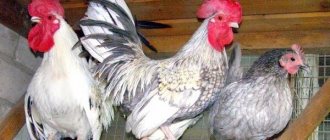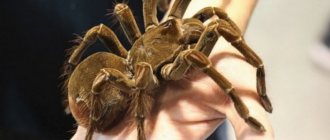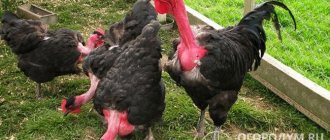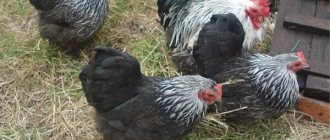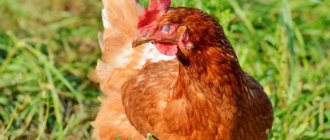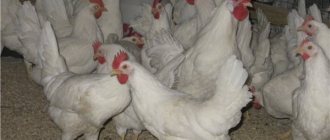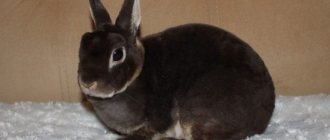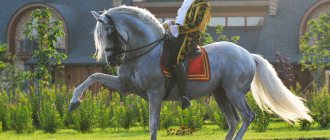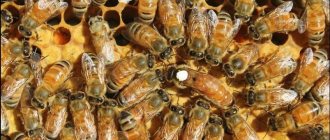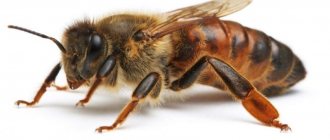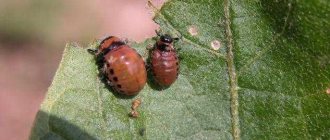Cochin chickens (another name for Shanghai chickens) have been known for several centuries. Despite the fact that in terms of productivity they cannot compete with more modern egg and meat varieties, many backyard owners enjoy breeding these wonderful birds.
The spectacular appearance and endurance of Cochin chickens are highly valued by poultry farmers and breeders around the world.
We will try to understand the characteristics of the breed and the reasons for its stable popularity among domestic and foreign poultry farmers. A general idea of Cochins can be obtained from the table:
| Parameter | Characteristic |
| Class | Birds |
| View | Chickens (Gallus gallus L.) |
| Breed | "Cochin" |
| Productivity type | Decorative |
| Plumage color | Fawn, black, white, blue, marble, etc. |
| Age of puberty | About 8 months |
| Egg production indicators | On average about 110 pieces per year |
| Egg weight | 54-60 g |
| Shell color | Tan |
| Hatchability and survival of young animals | High |
| Growth rate of young animals | Not tall. At 16 weeks of age, chicks weigh about 2.5 kg |
| Live weight of an adult | Hens – up to 4.5 kg, roosters – up to 5.5 kg. The weight of dwarf specimens does not exceed 800 g |
| Consumer qualities of meat and eggs | Excellent |
| Sustainability | The bird tolerates both heat and cold well; hardy and unpretentious |
| Registration in the State Register of the Russian Federation | Only one variety is registered - “Cochin Blue”. Year of registration – 1993 |
| Originators | Federal State Budgetary Institution "Federal Scientific Center for Animal Husbandry-VIZh named after Academician L. K. Ernst", Federal State Budgetary Institution Federal Scientific Center "All-Russian Scientific Research and Technological Institute of Poultry Breeding" RAS, LLC "Genofond" (Moscow region) |
In the photo - chickens of the Cochin Blue breed - the only variety included in the State Register of the Russian Federation
Description of the laying hen's appearance
The body has a rounded shape, with a short neck and a small head, which is crowned with a small erect crest. The “highlight” of the feathered beauty is the fluffy fur coat that covers her from head to toe – just a fluffy little bun.
Even the paws of the quonkas are covered with feather “pants” of bell-bottom style right down to the claws. On top of that, the feathered lady is very tall - she can grow up to 50 cm, and has a weight that ranges from 3 to 4.5 kg.
Productivity
Cochinquin belongs to the meat type of productivity. The average weight of a laying hen is 3.8 kg, and that of a male is 4.7 kg. The growth rate of young animals is characterized as average. By the end of the 4th month, the body weight of the individual is close to 2.5 kg. The meat is tasty and tender, but if overfed it may contain excess fat.
Puberty ends by 8 months, which is quite late in modern times. Starting from this age, laying hens produce dark brown eggs, up to 120 eggs annually, 57 g each. It is noteworthy that Cochin egg production increases in winter, and not in summer, as usual in chickens.
With the onset of autumn, the days shorten, and the birds begin molting, which lasts 1 month. During this crucial period, the egg yield decreases, but with the appearance of a new cover it resumes in the same volume.
Later, when age-related “change of clothes” sets in, egg production will begin to steadily decline and will no longer reach its maximum.
Variety of colors
- White ones are considered the most common. The feathers have a silvery tint. The beak and metatarsus are rich yellow.
- There is a variety of striped Chinese. In this case, each feather is covered with blue stripes, together making up a rather interesting motley “fur coat”.
- Blue ones are covered with feathers without edges. These birds' metatarsals may have a greenish-marsh tint.
- Partridge. Roosters are a little different. Their head is red-brown, and their body is covered with feathers the color of autumn leaves. Ladies in brown-golden “fur coats”, a little lighter.
- They are black with a green tint.
- Fawn have a rich, yellowish tint.
- And the last variety is black and white. The base color of the plumage is black, with white patterns on each feather.
Subspecies
There are several main varieties of the breed. Subspecies are distributed according to the color of the bird's plumage. It is customary to distinguish partridges, blue Cochins, fawn, white, and also black. At the same time, one type stands out due to the structure of the body: it is called dwarf.
READ History of the Boerboel breed
Let's take a closer look at each subspecies.
Black
This subspecies is superior to others in terms of distribution. Black Cochins began to be bred quite a long time ago, back in the 20th century. The plumage of the bird is black with a deep greenish tint.
Black Cochin
Blue
Birds of the blue subspecies occupy second place in accordance with their distribution and level of popularity. They are distinguished by their grayish-blue plumage. At the same time, the feather has a pleasant velvety structure. At the bottom the fluff may be light. The beak, as well as the metatarsus, have an emerald, yellowish color. Dark, black shades are allowed in the area of the back and wings, the head with the collar part.
Blue subspecies
They look impressive and immediately attract the attention of individuals of this subspecies. They are distinguished by dense white plumage, many also have a silvery tint
The metatarsus should be greenish-yellow or pure white. Classic yellow beak. If the plumage turns yellow, the bird is discarded.
Visual characteristics of white typePale yellow
Birds of this type are also called yellow. They have yellow, golden, red feathers with a strong shine. The color is the same for all parts of the body, metatarsus, and beak. Reason for culling: white down, reddish, light shade of plumage. There should be no feathers or black rods.
Partridge
- Feathers should be golden or brown tones.
- The metatarsus and beak are distinguished by a yellowish tint.
- The tail and collar area can have colors ranging from dark, almost black, to brown.
- The edge on the feathers is multi-row.
- A dark horny beak color is allowed.
A typical representative of the partridge subspecies
Roosters have their own requirements.
- The head has a reddish-brownish tint down to the shoulders.
- The chest is dark brown.
- The loin is golden brown in color.
- The tail and metatarsals are black, and the down on them is dark gray.
- The feathers are golden, and they have dark streaks along the shafts.
- The wings are brown on the outside, but much darker on the inside, almost black. There is a dark stripe with a greenish tint running across it.
Dwarf
There is another subspecies of bird that is more decorative. This is the so-called dwarf Cochin. It was bred gradually, in parallel with standard breeds. The physique of such a bird is muscular and stocky. The basic shapes and lines are preserved, but the size is significantly different: the body weight of chickens varies in the range of 600-800 grams.
The feathers are quite soft, with virtually no hard shafts. The tails resemble balls. The legs are not as well feathered as those of standard Cochins. According to color, dwarf birds can be divided in the same way as standard ones. But experts note that most of them are dwarf golden Cochins.
Dwarf breed
Dwarf cochins
This is a separate species that is different in many ways. Read more in a separate article - the Cochin dwarf chicken breed. In their external features they are similar to their large relatives. They are tiny - the weight of mini-hens is 650-750 g, and the weight of cockerels is 750-850 g. Dwarfs have the same variety of colors, body shape and lush plumage with an abundance of fluff.
The eyes of dwarfs are small, deep-set, and deep red. The bright scarlet comb and earrings are much more developed in roosters than in feathered beauties.
Incubation
Artificial incubation conditions are standard. Chicks hatch at 21 days.
Table of temperature and humidity modes
| Period |
